Doctors are only the mechanics of the human body. They fix what is wrong and will not see you in most cases until the damage is done. They don’t come to you when you are healthy and pat you on the back for eating right and exercising just as they do not knock on your door when the dinner menu is meat and dairy and tell you to eat plants instead…
Hippocrates said it best 100’s of years ago, “Let food be your medicine and medicine be your food.” This was long before doctors drove around in Mercedes and vacationed at beach homes and ski condos several times a year. Doctors used to influence people to live a healthy lifestyle but now doctor’s agenda is to lure you into an expensive medical procedure and get you hooked on prescription drugs that are lobbied by cash-rich pharmaceutic companies that thrive on human disease.
It is the general consensus that healthcare is expensive and if your illness doesn’t kill you, your doctor and hospital will break you financially. I don’t know what is worse, being sick or being broke? The repercussions are the same for both being sick and being broke – “miserable.”
Now, that is the doom and gloom, here is the good news – “Veganism.” Whole organic grains like wheat berries, whole barley, farro, buckwheat, and quinoa will boost your immune system, increase your intake of plant-based protein and calcium and important nutrients to maintain pristine health. Organic beans like mung, adzuki and garbanzo are loaded with protein, antioxidants, and vitamins with anti-cancer and anti-heart disease components. Organic fruits and vegetables offer minerals, enzymes and nutritional value that extends life and health. Living foods enhance life in your body.
We have only one life, one heart, one kidney, one lung, one liver…well, you get the picture, There are no replacements parts for our body, unlike your car. Meat, dairy, and processed foods attack your healthy vital organs. Drugs don’t provide you with nutrition — they only block or fool the body into believing, on a temporary basis, that something is balanced. Dead foods and drugs are foreign to your body and cause havoc and eventually will kill you.
Living foods enhance your health, heal your body and give you vibrancy, energy and a magnitude of opportunity to enjoy a quality lifestyle both physically and spiritually………
Go and thank your organic farmer for saving your life and call him “doctor” – While you are at it, give your organic farmer a huge hug too – they are passionate, hard working and dedicated to organic farming. Thank you Doug …
It doesn’t matter what your health, age, or geographic location is. Currently, unhealthy people and those wanting to maintain good health should definitely consider veganism. There are certain factors that can make veganism even more essential.
Vegans have much lower cholesterol levels than meat-eaters, and heart disease is uncommon among vegans. The reasons are not hard to find. Vegans meals are typically low in saturated fat and usually contain little or no cholesterol. Since cholesterol is found only in animal products such as meat, dairy, and eggs, vegans consume a cholesterol-free diet. The type of protein in a vegan diet may be another important advantage. Many studies show that replacing animal protein with plant protein lowers blood cholesterol levels-even if the amount and type of fat in the diet stays the same. Those studies show that a low-fat, vegan diet has a clear advantage over other diets.
An impressive number of studies, dating back to the early 1920s, show that vegans have a lower blood pressure than non-vegans. In fact, some studies have shown that adding meat to a vegan diet raises blood pressure levels rapidly and significantly. The effects of a vegan diet occur in addition to the benefits of reducing the sodium content of the diet. When patients with high blood pressure begin a vegan diet, many are able to eliminate their need for medication.
The latest studies on diabetes show that a diet high in complex carbohydrates (which are found only in plant foods) and low in fat is the best dietary prescription for controlling diabetes. Since diabetics are at high risk for heart disease, avoiding fat and cholesterol is the most important goal of the diabetic diet, and a vegan diet is ideal. Although all insulin-dependent diabetics need to take insulin, plant-based diets can help to reduce insulin needs.
A vegan diet helps prevent cancer. Studies of vegans show that death rates from cancer are only about one-half to three-quarters of those of the general population. Breast cancer rates are dramatically lower in countries where diets are typically plant-based. When people from those countries adopt a Western, meat-based diet, their rates of breast cancer soar. Vegans also have significantly less colon cancer than meat-eaters. Meat consumption is more closely associated with colon cancer than any other dietary factor.
Why do vegan diets help protect against cancer? First, they are lower in fat and higher in fiber than meat-based diets. But there are other important factors also. For example, vegans usually consume more of the plant pigment beta-carotene. This might help to explain why they have less lung cancer. Also, at least one study has shown that natural sugars in dairy products may raise the risk of ovarian cancer in some women. Some of the anti-cancer aspects of a vegetarian diet cannot yet be explained. For example, researchers are not quite sure why vegans have more of certain white blood cells, called “natural killer cells,” which are able to seek out and destroy cancer cells.
Vegans are less likely to form either kidney stones or gallstones. In addition, vegans may also be at lower risk for osteoporosis because they eat little or no animal protein. A high intake of animal protein encourages the loss of calcium from the bones. Replacing animal products with plant foods reduces the amount of calcium loss. This may help to explain why people who live in countries where the diet is typically plant-based have little osteoporosis even when calcium intake is low.
Vegans are healthier and cut our risk of major diseases by at least half, in some cases altogether. Meat and dairy have no fiber, it is a dead animal and lacks nutrition as well as live foods. Fruits, vegetables, grains, and beans are live foods and are bursting with healing nutrients and vitamins that build pristine health. I know that I feel amazing every day, I can feel live foods in my body creating a healthy platform for a quality of life that only a Vegan can experience.
thank you Doug for the info
The following are herbal medicines I use to treat male infertility which are invaluable tools for men to use in our current day epidemic of infertility. Using a blend/formula of all herbs together for best results. Can be used safely where no infertility is established, just to enhance fertility during the conception process
1 Ashwagandha (Withania somnifera)
Ashwagandha (Withania somnifera) has beneficial effects on seminal quality, oxidative status, and reproductive hormone profiles (1). Seminal oxidative stress is linked to male idiopathic infertility. Research shows herb has protective effect of on semen quality in infertile male smokers and infertile men under psychological stress. Withania somnifera improves semen quality by regulating reproductive hormone levels and oxidative stress in seminal plasma of infertile males. Dosage ranged should be from 600 mg to 6 g a day, taken by men for at least two to three months
2 Maca (Lepidium meyenii) root
Maca (Lepidium meyenii) root has been acknowledged by Peruvians to improve sexuality and fertility. Maca improved sexual desire in healthy men at 8 and 12 weeks after doses of 1.5 g and 3.0 g daily (2). Maca has also shown to have aphrodisiac properties in mice and rats and to have a favourable effect on spermatogenesis in adult male rats and adult men (3).
A number of other studies show benefit for male fertility using Maca (4). In one controlled study, maca compared favorably with L-carnitine and placebo in improving sperm motility in infertile men but had no effect on sperm morphology or concentration. One uncontrolled observational study(UOS) reported significant benefits to sperm motility, progressive motility, sperm vitality, and sperm morphology in infertile men. Two controlled trials comparing maca with placebo in healthy men reported that maca improved motile sperm count and normal morphology as well as erectile function. Another UOS with healthy male subjects reported significant increases in total sperm count, motile sperm count, and sperm motility. Maca increases the length of sperm stages VII-VIII, elevating sperm counts without elevating daily production. One study suggested that this is achieved by maintaining a balanced oxidative/antioxidative state. More research is needed to determine maca’s mechanisms of action on sperm parameters. Potential bioactive ingredients include macaridine, macamides, macaene, glucosinolates, maca alkaloids, and maca nutrients.
3 Siberian/Korean Ginseng
Siberian/Korean Ginseng causes a decrease in the percentage of diskinetic forms of spermatozoids in men taking it. Researchers used a combination of Andrographis paniculata and 7.2 mg of Siberian Ginseng and noted a positive trend in the number of spermatozoids in the whole ejaculate, an increase in the percentage of active forms of spermatozoids, a decrease in the percentage of inactive (diskinetic) forms of spermatozoids, and an increase in the Farris fertility indices of the men taking it.(5)
4 Valerian root (Valeriana officionalis)
Valerian root (Valeriana officionalis) caused a decrease in the percentage of diskinetic forms of spermatozoids and also a temporary increase in the percentage of normokinetic spermatozoids was noted in men taking the valerian root. (5)
5 Passionflower (Passiflora incarnata)
Passionflower (Passiflora incarnata) has been used in herbal medicine to treat colic, dysentery, diarrhea, menstrual pain, skin eruptions, conjunctivitis, hemorrhoids, and muscle spasms. A number of studies support passionflower’s calming effects on the central nervous system. Recent work suggests that the plant may benefit people who are withdrawing from addictive drugs and may bolster men’s libidos. (6) An anxiolytic effect has also been observed. Researchers have reported on the ability of a novel compound in passionflower to restore libido in aging male rats, to restore fertility which has been reduced by alcohol or tobacco use, to reduce anxiety while withdrawing from alcohol and to restore the libido of male rats which are frequent users of tetrahydrocannabinol [THC] (a primary active ingredient of Cannabis sativa [a.k.a. marijuana). Passionflower also has a mild setative effect. Researchers disagree on whether its sedative effects are due to indole alkaloids such as harmane, harmaline, and harmol; flavonoids such as apigenin, luteolin, and scopoletin; or a recently isolated trisubstituted benzoflavone.
6,7 & 8 ginkgo (Ginkgo biloba),
horny goat weed (Epimedium sagittatum)
damiana (Turnera diffusa)
A herbal formula containing a blend of herbal medicines used to restore
male fertility showed positive results in a study. The authors conclude
that the blend was effective in improving erectile function in men with
sexual dysfunction. Authors also stated in the study “ it appears that
the blend may help in enhancing the overall quality of sexual
experience” (7) The formula contains 100 mg of Asian ginseng (Panax
ginseng), 100 mg of saw palmetto (Serenoa repens), 100 mg of ginkgo
(Ginkgo biloba), 100 mg of hawthorn (Crataegus laevigata), 50 mg of
muira puama (Ptychopetalum olacoides), 50 mg of catuaba (Erythroxylum
catuaba), 25 mg of Chinese dodder (Cuscuta chinensis), 15 mg of horny
goat weed (Epimedium sagittatum), 75 mg of tribulus (puncturevine;
Tribulus terrestris), 100 mg of damiana (Turnera diffusa), and 5 mg of
black pepper [Piper nigrum]. The study did not have sufficient evidence
to distinguish between ED of organic, psychogenic, or mixed origin
Other Nutrients Of Benifit
Some nutritional supplements also help men increase fertility. Zinc (66 mg/day) and folic acid (5 mg/day) increased sperm count by 74% after 26 weeks of supplementation. While vitamin C (1,000 mg/day) increased sperm counts by 140% in another study; however, high doses of vitamin C can decrease fertility in women by reducing cervical fluid production. Another study in which men received 400 mg/day vitamin E and 225 microgram/day selenium, ‘an improvement in sperm motility’ was detected.
References
1)Mahdi AA, Shukla KK, Ahmad MK, et al. Withania somnifera improves semen quality in stress-related male fertility. Evid Based Complement Alternat Med. Sep 29, 2009
2) Cordova A, Vega K, Villena A, Gonzales GF. Efecto del Lepidium meyenii (Maca) una planta alco-andina sobre el escado de animo y el deseo sexual en varones aparencemente normales. Reproducao e Climaterio 2001;16:S96-S97.
3) Gonzales G, Cordova A, Vega K, Chung A, Vellena A. Effect of Lepidium meyenii (Maca), a root with aphrodisiac and fertility-enhancing properties, on serum reproductive hormone levels in adult healthy men Journal of Endocrinology. 2003;176:163-168
4) Lee MS, Lee HW, You S, Ha K-T. The use of maca (Lepidium meyenii) to improve semen quality: a systematic review. Maturitas. October 2016;92:64-69.
5) Mkrtchyan A, Panosyan V, Panossian A, Wikman G, Wagner H. A phase I clinical study of Andrographis paniculata fixed combination Kan Jang versus ginseng and valerian on the semen quality of healthy male subjects Phytomed. 2005;12:403-409
6) Cronin J. Passionflower: Reigniting male libido and other potential uses Alternative & Complementary Therapies. 2003;April:89-92
7) Shah GR, Chaudhari MV, Patankar SB, Pensalwar SV, Sabale VP, Sonawane NA. Evaluation of a multi-herb supplement for erectile dysfunction: a randomized double-blind, placebo-controlled study. BMC Complement Altern Med. 2012;12:155
When you count all the little folds, the total surface area of our gut is about 3,000 square feet. That’s larger than a tennis court. Yet, only a single layer of cells separates our inner core from the outer chaos. The primary fuel that keeps this critical cell layer alive is a short-chain fatty acid called butyrate, which our good bacteria make from the fiber we eat. We feed the good bacteria in our gut, and they feed us right back. As shown in my video, Prebiotics: Tending Our Inner Garden, our good gut bacteria take the prebiotics we eat, like fiber, and, in return, provide the vital fuel source that feeds the cells that line our colon—a prototypical example of the symbiosis between us and our gut flora.
How important are these compounds that our good bacteria derive from fiber? Researchers have explained that a condition known as diversion colitis “frequently develops in segments of the colorectum after surgical diversion of the fecal stream.” What does that mean? If you skip a segment of the bowel (like with an ileostomy) so food no longer passes through that section, it becomes inflamed and can start bleeding, breaking down, and closing off. How frequently does this happen? It can occur up to 100% of the time, but the inflammation uniformly disappears after you reattach it to the fecal flow.
We didn’t know what caused this. Perhaps it was some kind of bacterial overgrowth or bad bacteria? No, it was a nutritional deficiency of the lining of the colon due to the absence of the fiber needed to create the short-chain fatty acids. This was proven in a study wherein researchers cured the inflammation by bathing the lining in what it so desperately needed: fiber breakdown products. Severe inflammation was gone in just a few weeks, demonstrating that when we feed the good bacteria in our gut, they feed us right back.
It makes sense that we have good bacteria in our gut that feed us and try to keep us healthy—they have a pretty good thing going. Our guts are warm and moist, and food just keeps magically coming down the pipe. But if we die, they lose out on all of that. If we die, they die, so it’s in their best evolutionary interest to keep us happy.
But, there are bad bugs, too, like cholera that cause diarrhea. These have a different strategy: The sicker they can make us, the more explosive the diarrhea, and the better their chances of spreading to other people and into other colons. They don’t care if we die, because they don’t intend on going down with the ship.
So, how does the body keep the good bacteria around while getting rid of the bad? Think about it. We have literally trillions of bacteria in our gut, so our immune system must constantly maintain a balance between tolerating good bacteria while attacking bad bacteria. If we mess up this fine balance and start attacking harmless bacteria, it could lead to inflammatory bowel disease, where we’re in constant red-alert attack mode. Researchers explained, “The mechanisms by which the immune system maintains this critical balance remain largely undefined.” That was true…until now.
If you think about it, there has to be a way for our good bacteria to signal to our immune system that they’re the good guys. There is. And that signal is butyrate. Researchers found that butyrate suppresses the inflammatory reaction and tells our immune system to stand down, so butyrate “may behave as a microbial signal to inform [our] immune system that the relative levels of [good] bacteria are within the desired range.” Butyrate calms the immune system down, saying in effect, “All’s well. You’ve got the good guys on board.” This ultimately renders the intestinal immune system hyporesponsive, (i.e., accommodating) to the beneficial bacteria. But, in the absence of the calming effect of butyrate, our immune system is back in full force, attacking the bacteria within our gut under the assumption that those are obviously not the good ones since butyrate levels are so low.
We evolved to have butyrate suppress our immune reaction, so should our good bacteria ever get wiped out and bad bacteria take over, our immune system would be able to sense this and go on a rampage to destroy the invaders and continue rampaging until there were only good bacteria creating butyrate to put the immune system back to sleep.
But what if we don’t eat enough fiber? Remember, our good bacteria use fiber to create butyrate. So, if we don’t eat enough fiber, we can’t make enough butyrate. We could have lots of good bacteria, but if we don’t feed them fiber, they can’t make butyrate. And when our body senses low levels of butyrate, it thinks our gut must be filled with bad bacteria and reacts accordingly. In other words, our body can mistake low fiber intake for having a population of bad bacteria in our gut.
Our body doesn’t know about processed food—it evolved over millions of years getting massive fiber intake. Even during the Paleolithic period, humans ingested 100 grams of fiber a day. So, on fiber-deficient Western diets (Spam on Wonder Bread, anyone?), when our body detects low butyrate levels in the gut, it doesn’t think low fiber. As far as our body is concerned, there’s no such thing as low fiber. So, instead, it thinks bad bacteria. For millions of years, low butyrate has meant bad bacteria, so that’s the signal for our body to go on the inflammatory offensive. That’s one reason why fiber can be so anti-inflammatory and one of the reasons it’s said that “[f]iber intake is critical for optimal health.”
It’s important to note that we’re not referring to fiber supplements here, but whole plant foods. Fiber supplementation with something like Metamucil may “not replicate the results seen with a diet naturally high in fiber.”
Written By Michael Greger M.D. FACLM on March 6th, 2018
Lentils are to India what meatloaf is to America – Maybe that is why heart disease is an epidemic in the United States and practically unheard of in India…..
Ranging from yellow and red to deep black, these tiny disc-shaped members of the legume family are eaten in some form at least twice a day in “any self-respecting Indian household,” says Kavita Mehta, founder of the Web-based Indian Foods Co. In fact, India is the world’s biggest producer and consumer of lentils. Known as dal, lentils typically are served at every meal with steamed rice or bread.
This superfood gives you protein and cholesterol-lowering soluble fiber, as well as about twice as much iron as other legumes. And lentils are higher in most B vitamins and folate, which is especially important for women of childbearing age because folate reduces the risk of birth defects. Plus, U.S. Department of Agriculture researchers discovered that the pigment in Beluga black lentils acts like an antioxidant and helps protect against heart disease, cancer, and the aging process in general. Not too shabby for something the size of a pencil eraser.
What is in lentils that make it a superfood? Just imagine that lentils lack only 2 essential amino acids in order to complete the 20 amino acids that we need in our body. Lentils are low in fat, high in fiber, and low in calories (230 calories for a cup of cooked lentils) which are the best option for dieters. The lentil seeds can aid the digestion process and stabilize the blood sugar for its potential to lower the glycemic index and prevents blood sugar to rise rapidly after eating.
In addition, lentils are also rich in thiamin or vitamin B1, high in folate content or vitamin B6, loaded with minerals such as magnesium, calcium, manganese, phosphorus, and iron.
Take note that magnesium, the natural calcium channel blocker, has an essential role to keep our heart healthy. Enough supply of magnesium can relax the arteries, lessen resistance, and tremendously improves the oxygen, blood flow, and nutrients. Likewise, lentils are an energy booster and can replenish iron stores. Some people regarded lentils as the best alternative to iron meat because of its low calories and fat content.
Lastly, the high amount of tryptophan, a kind of amino acid can help to produce protein when combining with other amino acids. This tryptophan is known for anti-depression and can induce good sleep because it serves as a precursor for melatonin and serotonin of the brain. Another significant compound found in lentils is called molybdenum which function is to catalyze important chemical reactions in metabolism.
Lentils can be stored a long time, they are easy to make, and they are one of the cheapest protein sources going, at just $2.00 per pound. And unlike other legumes, you don’t have to soak them before cooking. Just rinse them in cold water and simmer in water or vegetable broth. Enjoy them plain or spiced with herbs, onions, or garlic. I simmer them with quinoa and buckwheat as the take the same time to prepare, 15 minutes.
I add a half a cup of lentils with a half a cup of either quinoa or buckwheat. You put the cup of lentils/quinoa in a pot and add two cups of water. Bring to a boil and simmer for fifteen minutes. I let stand for another ten or fifteen minutes and then place in a bowl and add chopped organic tomatoes, parsley, and a little fresh organic chopped onions. Top off with fresh squeezed organic lemon and a half of an avocado. This is a perfect meal of protein, calcium, antioxidants, enzymes, fiber, fat and tons of vitamins…..
For buckwheat, add three cups of water to the one cup of buckwheat and lentils. Thanks you Doug for the info veganhurt …
Yes, it is true. The fewer calories you consume, the healthier you are and the longer you will live. Calorie Reduction (CR) is the most amazing approach to health and longevity there is. Observe the “Blue Zones” – Sardinia, Italy, Okinawa, Japan, Loma Linda, California, Nicoya Peninsula, Costa Rica, Ikaria, Greece. These people that thrive into their 90’s and 100’s have one strong attribute – they do not consume a lot of food. Yes, of course, they walk a lot, love their work, have a strong family bond, participate in community activities, grow their own food and don’t watch CNN. But unequivocally they eat mostly vegetables, fruits, beans, whole grains, seeds, and nuts.
In the five “Blue Zones” the people live longer than anywhere else in the world… All of these people who live in their 90’s and 100’s eat mostly a vegan diet of beans, grains, nuts, seeds, fruits, and vegetables… They do not over-exercise, they walk and do their own chores, they are passionate about something whether it is painting, writing or playing an instrument, they have faith whether it is of God, mankind or the sun, they have something to look forward to every day, they surround themselves with family and friends and they don’t worry about stuff.. They have a purpose…
I embrace a plant-based calorie restriction lifestyle.
Now, if I find myself nervously hungry, I eat raw carrots, celery, radishes, cauliflower, and an apple… These foods are not only extremely healthy, but they are also loaded with fiber, nutrients, and antioxidants.
Oils are pure fat and highly processed. Fat is important, but consume those foods in their most natural state. Eat olives, nuts, avocados, chia and hemp seeds and make sure to put flaxseeds on all of your food as they are loaded with Omega-rich nutrients.
Mediation is a powerful tool to increase mental awareness, reduce stress, encourage a healthy body, slows aging and benefit cardiovascular and immune health… You don’t have to be a Hindu Guru to mediate. I meditate when I walk, take a sauna, lay in my bed and focus on the night and the morning. I also paint and find myself engrossed in my art. I am certainly no Picasso – I am content with being Doug. That is another factor in being whole – embrace your capabilities and be comfortable in your existence and contribution to your environment…
Pablo Picasso said, “I’d like to live as a poor man with lots of money.”
The best diet you can possibly eat is a poor man’s diet – You will live healthy for decades… This is my favorite meal – sweet potato, red beans, brown rice, tempeh and an avocado… , just simply the healthiest most wonderful tasting combination of food on the planet…
Life is a journey of sharing, experiencing and enjoying other people. Learning from people of different cultures is the most valuable opportunity we have in life. Life is a gift, just unwrap it carefully…
Thank you so much Doug for this .
When most people speak of “Chinese herbs” they are most commonly referring to the class of superior tonic herbs widely used in the Chinese herbal system. These are natural herbs taken as teas, patent formulas, powders or liquid extracts ideally tailored to help nourish or activate specific bodily systems.
Although these tonics are natural herbal remedies for many health conditions, they are not normally used medicinally to “treat” specific illnesses. Tonics are “tonifying” and work to build and strengthen our immunity so we are less susceptible to getting sick or vulnerable to what causes disease in the first place.
In other words, tonic herbalism is a preventative approach, emphasizing the promotion of health as opposed to the purging of disease once it has taken root.
Tonics are considered “foods” that can be used on a regular basis throughout the course of one’s lifetime. In fact, their effects tend to increase the more you use them, yielding cumulative long-term benefits.
They are often regarded as a major food group in Asian cultures and some popular varieties, like astragalus, jujube, and goji, are often used in everyday meals, brewed into soups and cooked with grains or legumes for added nutritional fortification.
What are Tonic Herbs and How Do They Work?
Chinese herbs are superior tonic roots, barks, leaves, berries and mushrooms that are used to “tone”, through their adaptogenic nature, the major organ systems of the body. They are often referred to as adaptogens because they increase our body-mind’s ability to “adapt” to change and help us overcome daily life stress.
In other words, they help to encourage resistance to trauma, anxiety, and fatigue by allowing the body to naturally regulate itself, normalizing over-activity or under-activity of the organs and glands. Additionally, tonics have a protective nature beyond that of other more common nutritive, sedating and cleansing herbs.
Many of the approximated
52 tonic herbs work specifically on different vital organ pathways to
rebuild, rejuvenate and/or activate life-force energies. They can not
only bring about positive changes in one’s physical being but also
greatly influence overall wellness on an emotional and spiritual level.
To
enable the release of beneficial components, all of these herbs must be
either simmered in water as a tea, infused in an alcohol menstruum or
must go through a special hot water extraction process.
About Chinese Tonic Herbal Formulations
Creating highly individualized tonic herb formulas is an ancient Chinese practice that requires a large degree of knowledge and education. There is definitely an art to blending different herbs to achieve specific health goals.
Because there can be a myriad of different scenarios occurring within any one particular individual, it may be appropriate to seek the advice of a qualified Chinese herbalist for additional assistance. This will allow the practitioner to tailor the most ideal formula and blend of herbs that can work to balance specific deficiencies and/or activate energies where needed.
This is not to say, in our opinion, that we can’t experiment with different herbs or read more about the unique properties of each in order to personalize our own preparations when appropriate.
Pre-Formulated Herbal Products
We also recommend purchasing pre-formulated herbal extracts that are specific for certain health conditions. Our two favorite companies are Dragon Herbs and Jing Herbs. Both provide numerous tonic products that can be helpful for balancing many common health problems, like adrenal fatigue, sexual impotency, insomnia, joint inflammation, and mental decline. Jing Herbs also offers health consultations and they have a free health analysis.
List of Top Chinese Herbs
This list of Chinese herbs is designed to lay a groundwork for
broader
understanding and help you become more familiar with the different herbs
and their range of functions. We don’t list all the major Chinese herbs
but have selected among the top most common varieties traditionally
used among Western herbalists.
Asparagus Root
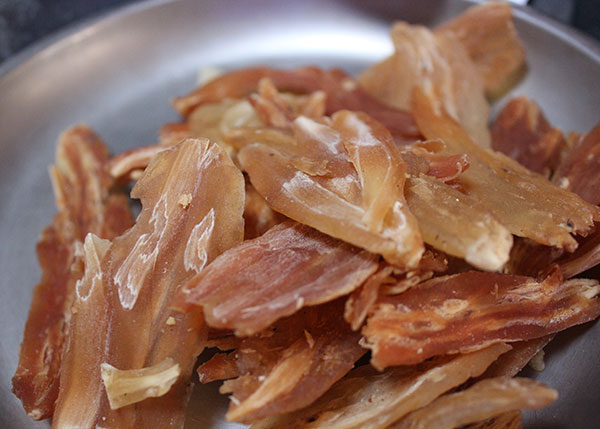
Asparagus root (Asparagus lucidus) is one of the major
Chinese herbs that works on all three treasures, supporting the lung,
heart and kidney systems. It is most famous in TCM as a Shen tonic
specifically used to calm the heart and is often prescribed as a natural
antidepressant because of its uplifting nature. It is also supportive
as a Chi and Jing tonic working as a natural energizer for the lungs as
well as a nourishing tonic for kidney Yin deficiencies. It is
particularly beneficial to women, taken to help increase fertility, sex
drive and used in many beauty formulas as it is known to add luster to
the skin. Asparagus lucidus is closely related to the Ayurvedic herb Shatavari (Asparagus racemosus) and is often used interchangeably.
Astragalus Root
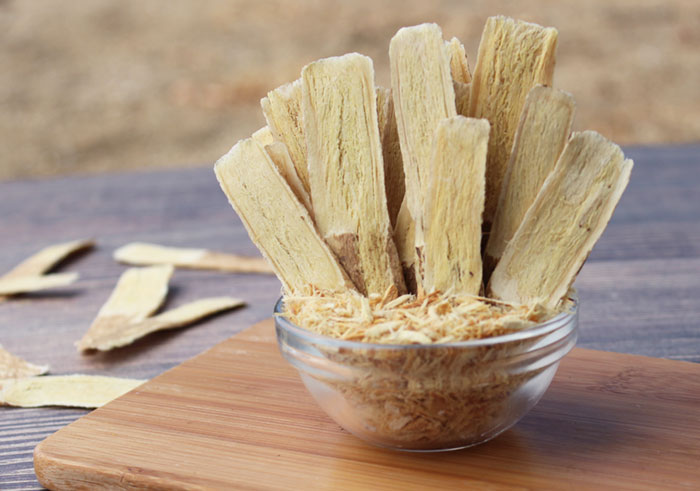
Astragalus root (Astragalus membranaceus) is a primary Chi (Qi) tonic that has been long revered as one of the most potent energizing tonics available next to ginseng. Working directly with the spleen and lung organ systems, the root is warming to the body and promotes strong musculature, good posture, and healthy respiratory, metabolic and eliminative functions. It is also well-known for its immune-enhancing attributes, containing unique astragaloside polysaccharides that encourage increased immune response. Astragalus contains a saponin called cycloastragenol which some health authorities believe is directly linked with what the Chinese call “Upright Qi.” This is thought to be the energy that counteracts the effects of gravity associated with the aging process.
Chinese Cinnamon
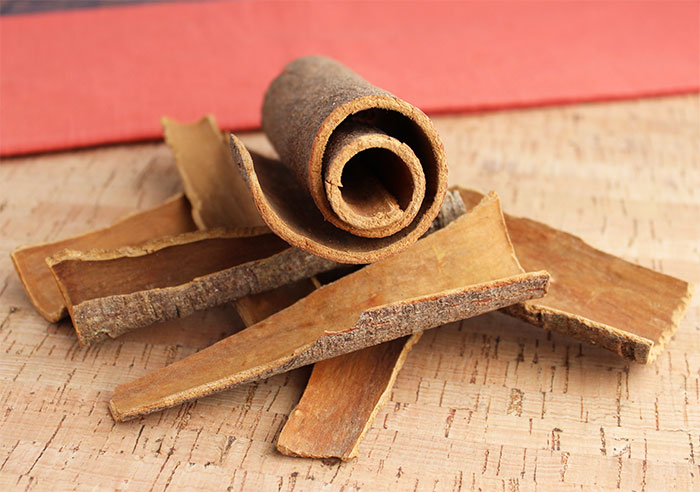
While it might seem somewhat unusual to call this common culinary
spice a tonic, but the cassia variety is in fact considered a Jing herb.
Also called Rou Gui, its hot energy and sweet pungent taste promotes
good circulation and helps balance cooling herbs used in tea
formulations. Both the bark and the twigs of the Chinese cinnamon tree (Cinnamomum cassia)
with their warming, yet demulcent qualities, increase Yang energies,
strengthen kidney Yang and are likewise considered mild sexual tonics.
The cassia variety should be used in small quantities because of its
potential liver damaging coumarin content that can be harmful when
consumed in very high doses. This is not the case with Ceylon cinnamon,
but Ceylon is less tonifying to the body.
Cistanche Stem
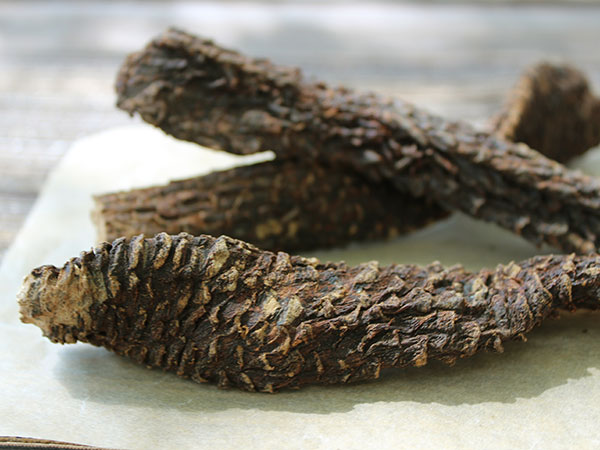
Cistanche (Cistanche deserticola)
is the stem of a desert plant most famous as a potent tonic for
enhancing sex drive and virility, often referred to as the “ginseng of
the dessert.” It is specifically a kidney Jing herb that works to
increase kidney Yang, offering several benefits that encourage optimal
functioning of the reproductive organs and glands. Like eucommia and
morinda, it is likewise strengthening the skeletal structure, especially
the back and knees. Cistanche extracts also fortify the Yin element and
are rejuvenating to the kidney-adrenal complex. The herb is made up of
unique plant compounds such as phenylethanoid glycosides and
cistanocides that contribute to its adaptogenic nature and range of
actions.
Codonopsis Root
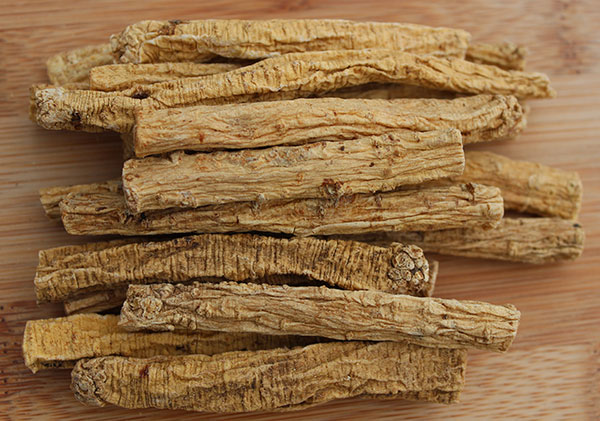
Codonopsis root (Codonopsis pilosula) is a mild, yet energizing, Chi tonic considered the “poor man’s ginseng” and often used in formulas as a ginseng substitute. It is not as strong as most ginseng varieties, which may be preferred by certain constitutions. Specific to the lungs and spleen, it helps to clear out excess mucus from the respiratory tract but also moistens and nourishes the tissues and organs where needed. It is particularly well-known for providing greater balance to the major metabolic systems. It also acts as a blood tonic to detoxify and build blood and encourages a beautiful complexion. It is considered a wonderful immune-boosting tonic root for those who are severely depleted or weakened after prolonged illness.
Cordyceps Mushroom
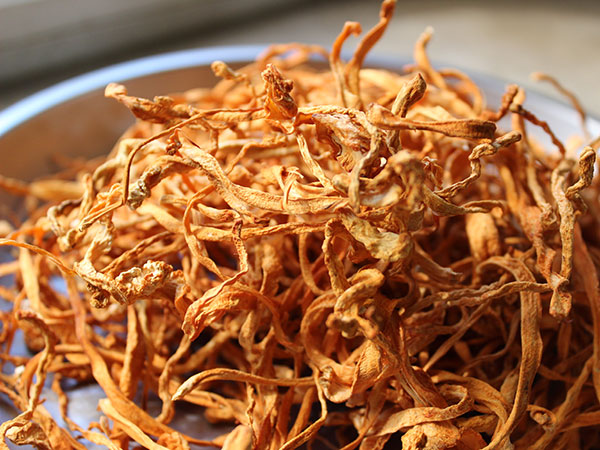
Cordyceps mushroom (Cordyceps sinensis or Cordyceps militaris)
was described by herbalist Li Chih Shen to be equivalent to ginseng in
its restorative qualities. As both a Chi and Jing tonic, it acts as an
immune system modulator and natural energy stimulant. Also known for its
effects at revitalizing the sex glands and reproductive system, the
mushroom is considered a potent aphrodisiac and top tonic for increasing
one’s sex drive. Cordyceps is known to be useful in recovery from
adrenal depletion and helps increase lung capacity as well as oxygen
utilization, making it a great tonic for improving athletic performance
and aerobic workouts. Cordyceps is a fungus that originally grew off of
insect bodies but today it is widely cultivated, usually on rice cakes.
Dong Quai Root
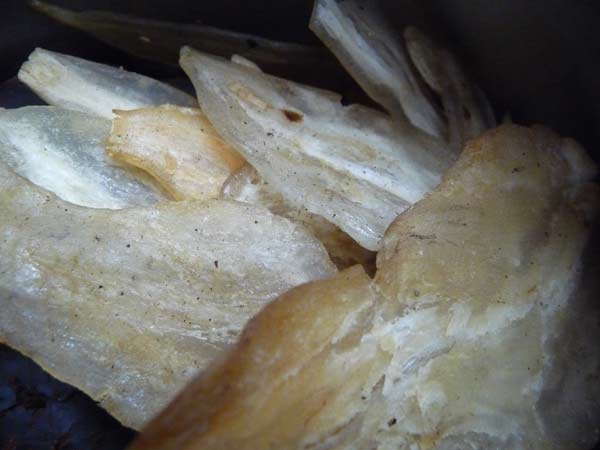
Dong quai (Angelica sinensis), also spelled dang gui or tang kuei, is a top blood nourishing tonic for both men and women, useful for revitalizing the blood and increasing circulation. As a Chi tonic, it has been praised as the “woman’s ginseng” because of its reviving effects on the female reproductive system. It is a commonly used ingredient in many Chinese patent formulas for this purpose. Working primarily with the spleen and liver systems, it is used to promote menstrual stability in women, reduces PMS symptoms and is also recommended for those with anemia to restore blood balance. Dong quai is good for men as well, helping to build muscle by increasing blood flow to the tissues.
Eucommia Bark
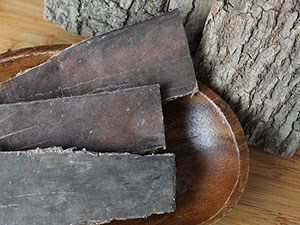
Eucommia (Eucommia ulmoides) is a potent kidney tonic and Yang Jing herb
most well-known for its ability to strengthen the skeletal structure of
the body. It is specifically effective for joint and back pain as well as
stiffness, especially in the knees, ankles and lower back. Eucommia, in many cases, can be used as a nutritional tonic for the
elderly to ensure healthy cartilage and to guard against conditions like
arthritis. Also considered a Yin Jing herb, it encourages flexibility in the ligaments and tendons and
is known to help fortify and nourish the bones. Eucommia additionally supports
healthy endocrine and sexual functions. It can be used
by both men and women for such purposes.
He Shou Wu
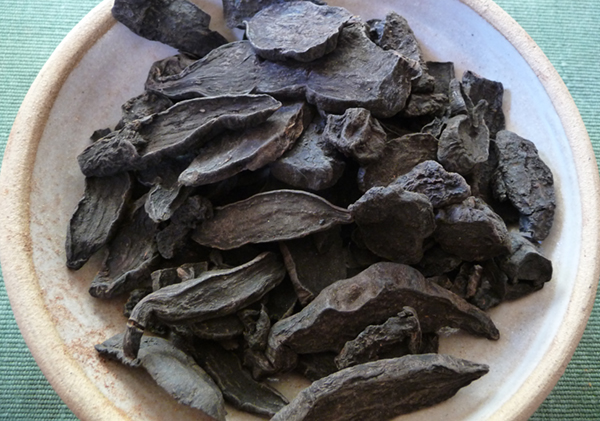
He Shou Wu (Polygonum multiflorum), or also called fo-ti, is a tonic adaptogen,
top superfood, and premier Yin Jing tonic. It is one of the fundamental
Chinese longevity herbs used extensively in TCM. According to Ron
Teeguarden, “This herb has been consumed by almost every Taoist master
that has ever lived.” It is very effective for replenishing kidney Yin
and deep deficiencies associated with adrenal exhaustion. While acting
as an energy restorative, it is simultaneously very calming to the
nervous system. Containing high amounts of zinc and iron, it can be
fortifying to the blood and also very cleansing to the liver. It is a
highly respected sexual stimulant that is known to encourage fertility
in both men and women. Fo-ti is traditionally “prepared” with black
soybeans to activate its health enhancing constituents. We do not advise
consuming herbal teas made with raw fo-ti root as they can be toxic to
the liver.
Ginseng Root
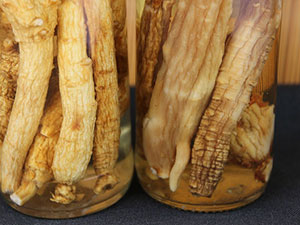
Ginseng (Panax ginseng),
is one of the most valued Chinese herbs used in Asia and known around
the world for its extremely energizing and health-promoting effects on
the body. As a premier Chi tonic, ginseng is a warming and stimulating
adaptogenic substance that is prized for its restorative and strength
building compounds, called ginsenosides. Ginseng has tonifying effects
on both the lung and spleen, the two organs responsible for extracting
energy from the foods we eat and the air we breathe. Although primarily
used to activate Chi, ginseng also works on all three treasures
including Jing and Shen as well as Chi. There are many different types
of ginseng roots with varying qualities depending on the source and age
of the root itself. American ginseng (Panax quinquefolius) is another variety that is often used as a sometimes preferred alternative because of its cooling nature.
Gynostemma Leaves
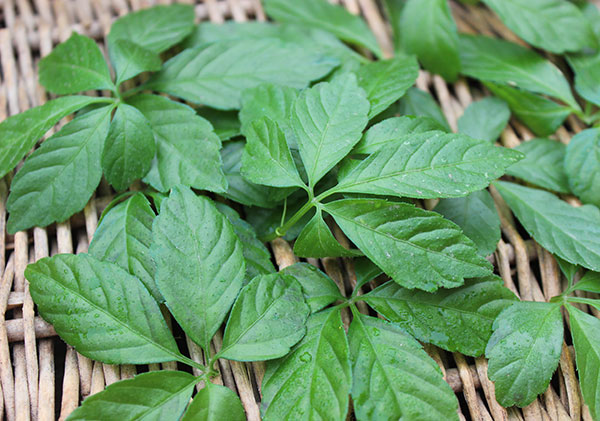
Gynostemma (Gynostemma pentaphyllum),
or jiaogulan, is a popular Asian green leafy herb commonly prepared as a
tea infusion. In Traditional Chinese Medicine, gynostemma leaf has
properties that are bitter and cool, and are beneficial to the lung and
heart organ systems. It is believed to offer effects that clear heat,
reduce inflammation, moisten the lungs as well as build adaptive energy.
The leaves are the most potent part of the plant, containing
triterpenoid saponins called gypenosides which are often compared to the
ginsenoside saponins found in Panax ginseng root. Both the saponins and
Gynostemma pentaphyllum polysaccharide content has shown to
exhibit antioxidant, anti-inflammatory and antitumor activity. Teas and
hot water extracts help prevent fatigue and are supportive to those with
cardiovascular conditions, type 2 diabetes, and obesity issues.
Jujube Dates

Jujube dates (Zizyphus jujube), or also called “red date”, are a Jing and Chi herb and blood cleansing fruit that are also known to regulate fluids, useful for either drying up excess mucus or moistening the tissues when needed. They are used to “clear the five openings”, which includes the eyes, ears, nose, throat, and sinuses. Jujube is a great harmonizing adjunctive herb to use with other tonics in herbal formulations. They are especially appropriate for neutralizing the fiery nature of Yang herbs, like ginseng. The dried fruit is added to preparations for toning and purifying the stomach, acting as a mild laxative.
Licorice Root

Chinese licorice root (Glycyrrhizae uralensis) is a deliciously sweet and unctuous tonic that is known as “the great adjunct” for its harmonizing or supporting influence when used with other Chinese herbs. This is due to its effectiveness at enhancing the main properties of other herbs and is, therefore, a common ingredient in many Chinese patent formulas or herbal preparations. It is a Chi tonic beneficial to the spleen, stomach, kidney and lung systems. Licorice is also known for its detoxifying effects that help to neutralize and eliminate toxins from the body. These cleansing attributes are said to “allow for all energies to flow more smoothly.” Licorice helps to enhance digestion and its cooling nature can be effective as a natural anti-inflammatory. It is building to the muscles and nourishing to the adrenals.
Lycium Fruit
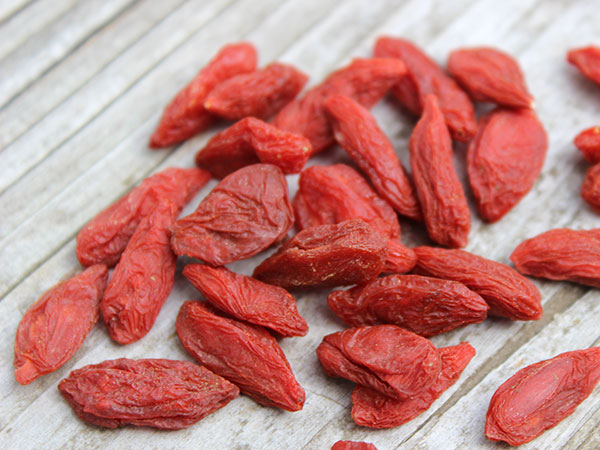
Lycium fruit (Lyciium barbarum), or also called lycii or goji berries,
are a tonifying blood tonic and Jing herb, helpful for improving
functions of the kidneys, liver and immune system. In Chinese medicine,
gou qi zi is considered a major tonic herb for restoring Yin Jing and
can be a nourishing decoction to use with other tonic herbs, like fo-ti
and rehmannia, in cases of kidney Yin deficiency, often associated with
kidney-adrenal burnout. High in species-specific polysaccharides
referred to as Lycium barbarum polysaccharides (LBPs), the
berries are known to stimulate the production of superoxide dismutase,
catalase and glutathione. Goji is comprised of carotenoids like
beta-carotene, and zeazanthin and are additionally a good source of
iron. They are often used as a harmonizing ingredient blended with other
Chinese herbs to increase their effectiveness.
Morinda Root
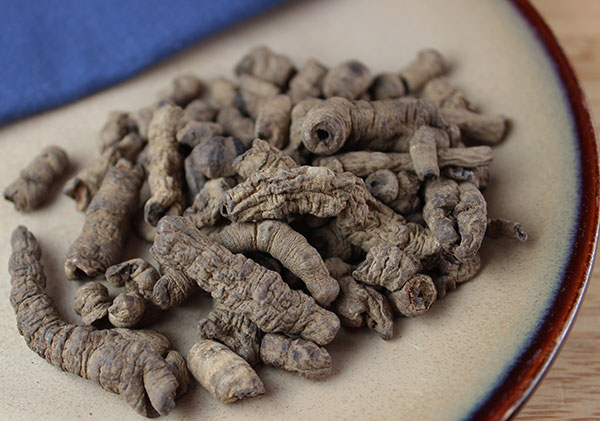
Morinda root (Morinda officinalis) comes from the same genus as noni fruit
and is a Yang Jing tonic with similar properties to that of eucommia
bark, it is also a very useful tonic for bone and joint health and is
commonly combined with eucommia in herbal formulations for these
purposes. It is influential as a strength-building herb and an often
added ingredient with other primal Jing preparations to improve, not
only physical strength but cognitive capacities. Morinda root is warming
to the kidneys and is used to treat kidney Yang deficiency and those
with specific sexual issues such as premature ejaculation, impotence and
infertility. It is additionally supportive to maintaining a healthy
cardiovascular system.
Rehmannia Root
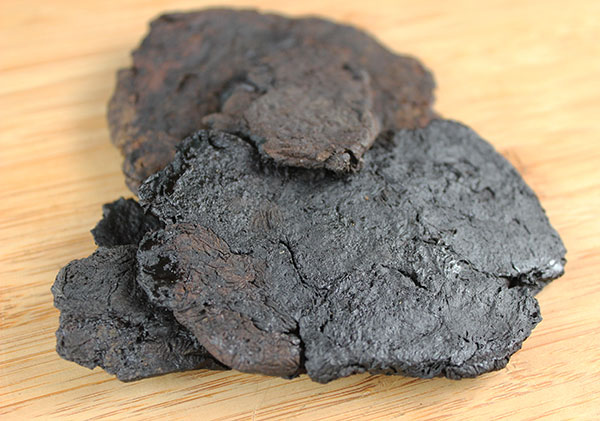
Rehmannia (Rehmannia glutinosa), is a thick dark root that
works specifically as a Jing herb, both as a blood and kidney Yin tonic.
Often compared to fo-ti root for its ability to nourish Yin depletion,
rehmannia is a prized longevity herb known to provide potent
restorative, building properties that can have a beneficial effect on
increasing fertility as well as sex drive. The root is used in tea
decoctions for strengthening the tendons, bones and bone marrow in
addition to supplying nutrients to the ears and eyes. Like fo-ti,
rehmannia is always usually “prepared” to activate its health-promoting
compounds that are specific for Yin deficiency. Raw roots, however, are
also used for other medicinal purposes.
Reishi Mushroom
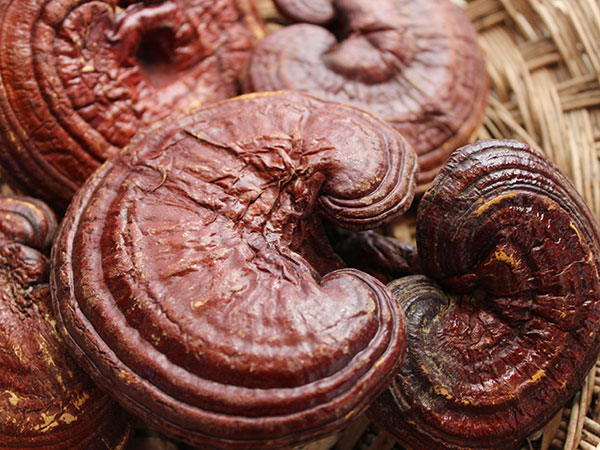
Reishi mushroom (Ganoderma lucidum) tonifies all three treasures: Jing, Chi and Shen and is often referred to as the “great protector”, guarding against the effects that physical, immunological and mental stress can have on the body over time. When taken consistently it is said to profoundly strengthen immune functions, calm and protect the nerves and help us to positively adjust to potential anxiety in our lives. Reishi is a highly respected Shen tonic renowned as the “herb of spiritual potency” for its ability to open the heart and encourage a meditative state of being. Reishi’s active ingredients include water-soluble polysaccharides and peptidoglycans, in addition to more than 100 triterpenes, like ganoderic acid, depending on the strain and quality. (*)
Rhiodiola Root
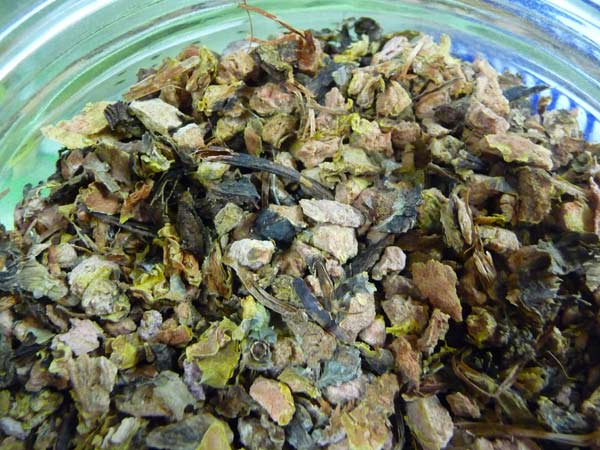
Rhodiola (Rhodiola Rosea) is considered a sacred herb among Asian as well Russian peoples. It is an energizing Chi tonic adaptogen particularly famous for its beneficial influence on reducing the secretion of cortisol, the “stress hormone.” It is often viewed as a top herbal aid for relieving daily stress and anxiety for this reason. It is well documented for its capacity to increase mental alertness and concentration skills, often recommended for overworked individuals or those who sit at a desk or do computer work for extended periods of time. Useful as a restorative herb for treating adrenal fatigue, it has also been shown to help effectively alleviate conditions such as insomnia and depression. It is tonifying to the lungs, heart, and effective as a strong immune system modulator.
Schizandra Berries
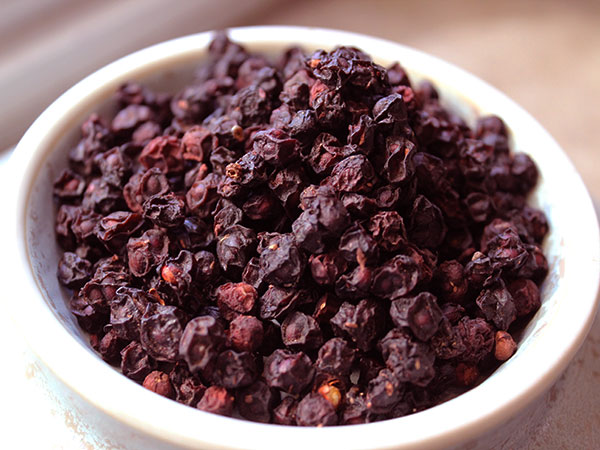
Schizandra berries (Schizandra chinensis)
are one of the most popular libido-enhancing tonics known in TCM,
rejuvenating the kidney Jing and increasing fluids to the reproductive
systems and sex glands. The berries work on all three treasures, Jing,
Chi, and Shen and also function as both a Yin and Yang tonic. Taking the
herb for periods of time is said to lubricate the area just under the
epidermis layer, providing for soft, supple skin. Subsequently, it has
been used in China by women of the imperial court specifically to
enhance and preserve a youthful appearance. Schizandra (also spelled
schisandra) is a blood purifier that also enhances eyesight and range of
vision. Many of the tonic effects to the skin and eyes are also a
result of its liver cleansing qualities. It is known to be one of the
only Chinese herbs to effectively enter all 12 meridians and is likewise
comprised of all 5 tastes. The berries are commonly soaked and brewed
as a “five flavor tea.”
When Not to Consume Chinese Herbs
These herbs are best taken when one is free of sickness and disease. Because major Chinese herbs are mostly building to the body rather than cleansing, it is also appropriate to stop taking tonics for a period time when undertaking cleansing or juice fasting protocols
According to Ron Teeguarden “It is a strict rule of Chinese tonic herbalism that the tonic herbs are
not to be used when acutely ill, even if the acute illness is just a
common cold. Correct any acute ailments before starting to use the
tonics, and suspend their use if and when you catch a cold or other
acute illness.”
Chinese Herbs and Pinyin Translations
Many times Chinese herbs are referred to by their Chinese/English names, not the “Western” names many use to identify them.
- American Ginseng – Xi Yang Shen
- Asparagus Root – Tian Men Dong
- Astragalus – Huang Chi (Qi)
- Cistanche – Rou Cong Rong
- Chinese Cinnamon – Guizhi and Rougi
- Codonopsis – Dang Shen
- Cordyceps – Dong Chong Xia Cao
- Coriolus – Yun Zhi
- Dong Quai – Dang Gui, Tang Kuei
- Eucommia Bark – Du Zhong
- Fo-ti – He Shou Wu
- Ginseng – Ren Shen
- Gynostemma – Jiaogulan
- Jujube Dates – Ta Tsao
- Licorice Root – Kan Tsao
- Lycium fruit (Goji berries) – Gou Qi Zi
- Maitake – Lian Hua Gu
- Morinda – Ba Ji Tian
- Reishi – Ling Zhi
- Rehmannia – Ti Huang
- Rhodiola – Hong Jing Tian
- Schizandra Berry – Wu Wei Zi
High-Protein Vegetables To Help Your Body Repair Cells and Make New Ones

Struggling to get enough protein in your diet? Whether you’re vegan, vegetarian, or simply want to swap out your meat with some eco-friendly options instead, these high-protein vegetables got you covered.
One of the main questions I get as a vegan (especially since I eat mostly raw) is how I get enough protein. While initially challenging, I came to realize that so many plant foods contain protein! I simply wasn’t eating enough of them.
Why Do We Need Protein?
Protein is an essential nutrient that plays a key role in how our bodies function. Every cell in the human body contains protein, and it is needed to help your body repair cells and make new ones. Your body also uses protein to make enzymes, hormones, and other body chemicals. It is an important building block of bones, muscle cartilage, skin and blood (1).
Your hair and nails are mostly made out of protein, so if your hair and nails are brittle, or your hair is falling out, it might be the case that you aren’t getting enough protein in your diet.
Protein is essential for satiety, meaning it keeps us full for longer. This means that it is great for those wanting to lose a few extra pounds, and helps regulate our blood glucose levels.
Protein is also needed for muscle repair and health, and for improving moods.
Amino Acids and Protein
Protein is essentially made out of small molecules called amino acids. Since the cells in your intestine can’t absorb whole proteins, digestive enzymes help break down the proteins into their component amino acids. These amino acids are then absorbed into the bloodstream and safely delivered at different parts around the body where they are required (2).
It was once believed that essential amino acids only exist within animal-based foods. As we now know, this is false, and essential amino acids are found abundantly in plant-based foods.
Essential amino acids are amino acids there are the building blocks of protein that our body can’t produce by itself. So if we don’t eat them, we won’t get enough of them.
There are nine essential amino acids that we need from food:
– histidine
– isoleucine
– leucine
– lysine
– methionine
– phenylalanine
– threonine
– tryptophan
– valine
Eating a wide variety of fruit and vegetables every day will ensure you’re getting the appropriate amino acids. Plant-based protein is also much easier for the body to assimilate and digest than protein that comes from animal products. For example, if you eat a bunch of sprouts, or kale for instance, all your body has to do is digest the fibre from the plant, while utilizing all the rest. With animal products, the waste that is left behind after picking out the certain amino acids sits in our colon as there is no fibre to push it out.
Too Much Protein A Bad Thing?
Too much protein is associated with several diseases. And I’m not talking about plant protein, I’m talking about animal protein (aka. meat, eggs and dairy). One study found that animal proteins increase participants’ risk of death by up to 74% (compared to their low-protein counterparts), even when controlling for a high amount of fat and carbs in their diet. These individuals were also several times more likely to die of diabetes (3).
Consuming too much animal protein may contribute to:
– Lighter brain weight (neurodegeneration)
– Higher risk of coronary heart disease, diabetes and stroke
– Cancer
– Kidney disease
– Liver disease
– Sluggish lymphatic system
– Osteoporosis
– Stomach pain and acid reflux
– Constipation and colon cancer
Not surprisingly enough, these same conditions are hallmark of those following a Standard American Diet.
15 High-Protein Vegetables
These high-protein vegetables will be sure to satisfy and ensure your body is infused with the proper amino-acid building blocks to support protein synthesis in the body.
1. Sprouts
Protein Content: ~3 grams per cup
All sprouts, whether it’s alfalfa, broccoli, sunflower, or clover, contain a high concentration of amino acids. In fact, sprouts are one of the highest protein containing plant foods on the planet (they’re also one of the most nutritionally dense foods on the planet!).
What is the protein content of different sprout varieties? See below!
• Alfalfa: 3 grams per cup
• Broccoli: 2 grams per cup
• Clover: 3 grams per cup
• Sunflower: 2 grams per cup
I can easily eat over 3 cups of sprouts, which would provide me with close to 10 grams of protein – not bad, hey?
Sprouts are also an excellent source of vitamin’s A, B1, B2, B3, B5, B6, B12, C, D, E and K, as well as minerals like calcium, iodine, iron, magnesium, manganese, phosphorous, potassium, selenium, silicon, sodium, sulphur and zinc.
2. Bok Choy
Protein Content: ~1 gram per cup
Bok choy is a delicious tender green, which when eaten in abundance, provides a hefty amount of protein. Bok choy contains around 1 gram of protein per cup, and is also an excellent source of calcium, folate, potassium, manganese, iron, and vitamins A, C and K.
3. Watercress
Protein Content: ~1 gram per cup
Watercress, a member of the cruciferous family, is high in vitamin K, B vitamins, calcium, manganese, potassium, as well as vitamins A and C. It is an excellent lung-cleansing herb and contains strong cancer-fighting properties (4).
4. Potatoes
Protein Content: ~4 grams for 1 medium white potato
This stealthy source of protein also happens to be one of the most popular vegetables on the planet. Not to mention, potatoes are also an excellent source of potassium, meaning they nourish the heart and help balance sodium levels in the body.
5. Spinach
Protein Content: ~3 grams for 3 cups
Spinach is one of my favourite leafy green to include in smoothies, juices and salads. You could easily make a spinach salad with 6 cups of spinach, which would provide you with over 6 grams of protein! Add a few chickpeas and avocado in there, and you have a salad with a whopping 25 grams of protein!
Spinach also contains plenty of iron to help prevent iron-deficiency anemia, and is high in vitamin C to help boost the immune system and fight cancer.
6. Organic Corn
Protein Content: ~2.5 grams for 1/2 cup
This protein-packed plant has been around for centuries (that is, before Monsanto started creating GMO varieties). Corn contains a healthy amount of thiamine, vitamin B6, vitamin C, folate, potassium, magnesium and phosphorous.
When choosing corn, always make sure it is non-GMO organic.
7. Asparagus
Protein Content: ~3 grams of protein per cup
Asparagus is another high-protein vegetable, packing in over 3 grams for just 1 cup! It is also an excellent source of B vitamins, folate, copper, manganese, phosphorous, magnesium, as well as vitamins A and K.
Asparagus is a rich source of the master antioxidant glutathione, which is a detoxifying compound that helps break down carcinogens. It also contains fructooligosaccharides (FOS), which provide prebiotic benefits, stimulating the growth of friendly intestinal bacteria.
8. Broccoli
Protein Content: ~2.6 grams per cup
This not-so-popular vegetable contains all of the essential amino acids, as well as folate, manganese, potassium, phosphorous, as well as vitamins C and K. Broccoli is a nutritional powerhouse, and is well known for its cancer-fighting glucosinolates (5). It also contains strong anti-inflammatory properties.
Just one cup of broccoli contains around 2.6 grams of protein. Eat it raw, roasted, baked, steamed, or sautéed.
9. Mustard Greens
Protein Content: ~1.5 grams per cup
While mustard greens can take a little time to get used to (they’re super spicy!), they definitely should not be avoided. These greens contain over 1.5 grams of plant-based protein per cup, and also provide the body with vitamin A, C, E and B-complex, as well as manganese, calcium and potassium.
10. Kale
Protein Content: ~3 grams per cup
By now you’ve probably heard more than your fair share about kale. It ranks pretty high in the protein department (about 3 grams per cup!), and contains necessary vitamins and minerals like vitamin K, C, A, and B6, as well as magnesium, calcium, potassium and manganese.
Kale contains a healthy ratio of omega-3 and omega-6 fatty acids, making it an excellent anti-inflammatory food. It is also high in lutein and zeaxanthin, two nutrients that are linked to a reduced risk of macular degeneration and cataracts (6).
Best of all, kale can be made into salads, smoothie, juices, and even wraps!
11. Collard Greens
Protein Content: ~1 gram per cup
This hearty green contains around 1 gram of protein per cup. While this seems small, if you think about it, that’s like 1 gram of protein per collard leaf. Make a few collard wraps, and bam, you’ve got nearly 4-5 grams of protein!
Similar to kale, collard greens are an excellent source of calcium, potassium, and manganese. They contain high levels of antioxidants that have been linked to a decreased risk of developing prostate cancer and breast cancer (7, 8). Collard greens also contain compounds that bind to bile acids in your gut, helping to reduce your cholesterol levels (9).
12. Brussels Sprouts
Protein Content: ~3 grams per cup
These tiny little cabbages (as I like to call them), pack a hefty dose of protein at 3 grams per cup. They’re also loaded with potassium, folate, manganese, magnesium, iron, calcium and vitamins K, C, A and B6. They’ve been found to promote the growth and health of intestinal bacteria, and stimulate the production of short-chain fatty acids in the gut (10)!
Roasting brussels sprouts really help bring out their flavour, but if you’d rather benefit from the nutrients available in their raw form, you can finely chop them up in salads!
13. Cauliflower
Protein Content: ~2 grams per cup
Cauliflower, another high-protein vegetable, comes in at 2 grams per cup. It is also a great source of potassium, manganese, magnesium, phosphorous, calcium, iron, and vitamins C and K.
Cauliflower is particularly high in one glucosinolate compound called sinigrin. Sinigrin is thought to possess strong anti-cancer and anti-inflammatory properties (11).
This cruciferous veggie is also rich in choline to help improve learning and memory and combat age-related memory decline.
Cauliflower makes a great meat substitute to cut down on animal protein, and makes a wonderful hummus base!
14. Avocado
Protein Content: ~4 grams for 1 avocado
This creamy, dreamy, super filling fruit contains over 4 grams of protein! Aside from their healthy monounsaturated fats, avocados are loaded with vitamins A, E, C, B and K, as well as minerals like potassium and calcium. This makes avocados not only great for building muscle, but an excellent choice for bone support, too!
Avocado is packed with the nutrient biotin, which helps protect our cells from damage, and support healthy hair, skin and nails. It is also incredibly beneficial to the health of our heart, all thanks to a compound called beta-sitosterol, which lowers LDL cholesterol, while raising good, HDL cholesterol.
15. Green Peas
Protein Content: ~8 grams per cup
While green peas are technically a legume, I still classify them as a vegetable. They’re incredibly high in protein (over 8 grams per cup), and also contain a unique assortment of health-protective phytonutrients like coumestrol, which protects against stomach cancer (12).
Green peas are also a great source of vitamin K, vitamin B1, B6, B3 and B2, as well as manganese, copper, phosphorous, folate, zinc, iron and magnesium.
Sources:
http://www.jonathanssprouts.com/wp-content/uploads/2015/07/JS_Sprouts_Nutrition_Facts.pdf
http://nutritiondata.self.com5.2Kshares
Filed Under: Food Education, Health Tagged With: foods high in protein, high protein vegetables, plant-based protein, vegan protein sources
Carly Fraser
About the Author
Carly Fraser has her BSc (Hons.) Degree in Neuroscience, and is the owner and founder at Live Love Fruit. She currently lives in Winnipeg, Manitoba, with a determined life mission to help inspire and motivate individuals to critically think about what they put in their bodies and to find balance through nutrition and lifestyle. She has helped hundreds of thousands of individuals to re-connect with their bodies and learn self-love through proper eating habits and natural living. She loves to do yoga, dance, and immerse herself in nature.
Turmeric is a prized spice around the world, and is best known for its vibrant color. But it has a lot more to offer than color and flavor; turmeric is also an extremely potent superfood with a myriad of health-boosting benefits and medicinal uses. With so much to offer, turmeric is definitely something to consider for your prepper arsenal.
It’s commonly assumed that turmeric’s parent plant, Curcuma longa, isn’t a good choice for preppers because it can be hard to grow outside of its native climate in India. But, some experts are now saying that with the right conditions, Curcuma longa can indeed be grown in alternate climates. For preppers interested in growing their own medicinal herbs, this is great news.
Growing your own turmeric
As Beans, Bullets, Bandages and You reports, producing your own supply of turmeric isn’t as hard as you might think. Turmeric is made from the roots and rhizomes of the Curcuma longa plant, which are then dried and ground into the golden powder we all know and love.
People often that Curcuma longa is hard to cultivate outside its native climate, leading many preppers to write off turmeric entirely. After all, if you can’t grow it yourself, its usefulness in a survival situation becomes quite limited. But, as sources explain, growing your own turmeric might be easier than you think.
Beans, Bullets, Bandages and You reports that a number of suggestions from Plant Delights can make it possible to grow Curcuma longa just about anywhere.
As reported:
Curcuma likes well-drained, organically-rich, slightly acidic soil. It prefers some sun, but will do with good indirect light. Since it’s from India, it’s used to monsoon and dry seasons. Summer is closest to monsoon season, so it likes to be wet in the summer. Winter corresponds to the dry season. The British nursery I got this information from lets it stay outside in the winter, but their winters are fairly mild. They suggest if the ground’s going to freeze, you lift the roots and rhizomes (those are the little nodules on the roots; they house friendly bacteria) and store them in sawdust or peat moss, moist, where they won’t freeze.
The plant should flower sometime in the mid-fall. Experts caution that Curcuma may come up late in the spring, but not to let that be discouraging. The roots also tend to send up new shoots later than most.
So, Curcuma longa needs to be kept warm, wet and well-fed during the summer months. And in the winter, it should be kept cool and dry — but not too dry, or else the plant will shed its leaves and stop flowering.
Should your plantings thrive, its recommended that they be lifted and divided every five years for best health.
Reaping the rewards of turmeric
Once you’ve got your Curcuma longa garden on the right track, it won’t take long to be able to reap the rewards of having your own source of turmeric. Once you dry out the roots and rhizomes for grinding, you’ll have a steady supply of a highly prized spice and superfood.
Turmeric has many health benefits, thanks to the array of bioactive medicinal compounds it possesses.Research shows that turmeric is just as effective as many pharmaceutical drugs — and generally has fewer side effects. Curcumin is the most prominent medicinal nutrient found in turmeric, and is known for its potent antioxidant activity and for its anti-inflammatory effects.
Studies also show that curcumin can boost heart health and improve exercise capacity.
Recently published research also indicates that turmeric supplements can help with depression and anxiety. So in addition to benefiting your physical health, turmeric can also support a healthy mind as well.
Sources for this article include:

Kombucha is the rage among health food lovers. Now researchers have gathered 75 studies attesting to its proven health properties
Fermented tea known as kombucha has been rapidly growing in popularity among health food lovers. But it’s actually been around for thousands of years. It originated in China in the third century B.C. Then it made its way to Russia, India, and Japan where it became a staple among Samurai warriors. Today it is also popular in Poland, Germany, Bulgaria, Indonesia and many other cultures.
Kombucha — or “the booch” to its fans — is made from green, black or white tea. It’s fermented for at least a week with sugar and a fungal culture consisting of a mixture of bacteria and yeast. The starter is called a “SCOBY,” which is an acronym for “symbiotic colony of bacteria and yeast.”
The culture, also sometimes referred to as the “mother,” resembles a light brown, tough, gelatinous disk, which is a living, growing organism. With each batch of the tea, the organism can regenerate and create a new culture called the “baby,” which can be shared with a friend much like the sharing of a sour dough starter.
Sometimes called “mushroom tea,” kombucha has been associated with a long list of health benefits. It’s a probiotic drink with helpful bacteria that support digestion and the immune system. It also contains enzymes, amino acids, antioxidants and polyphenols.
But relatively little scientific evidence has confirmed the health claims of traditional cultures drinking the tea. Researchers from the University of Latvia gathered 75 studies attesting to the proven health properties of kombucha.[1]
Here are 18 healthy reasons they suggest to raise a glass of kombucha.
1. Detoxification
Kombucha contains substantial amounts of glucuronic acid (GA). GA is well known as a detoxicant. In the body it combines with toxins like pharmaceuticals and environmental pollutants. It then converts them into compounds that are soluble and the body can excrete. Drinking kombucha may also help prevent tissues from absorbing industrial toxins in the environment.
2. Antioxidants
Kombucha contains abundant antioxidants including vitamins E, C, beta-carotene, and other carotenoids. Like black tea, kombucha also contains polyphenols and other compounds with antioxidant powers. But because it is fermented, kombucha is much more powerful than plain tea. Its antioxidant activity has been found to be 100 times higher than vitamin C and 25 times higher than vitamin E.[2] For that reason drinking traditional kombucha may help cure chronic illnesses caused by oxidative stress.
3. Energy
Kombucha sets iron free from black tea. That helps increase levels of blood hemoglobin, and improves oxygen flow to tissues. It also improves the body’s absorption of other non-heme (plant-derived) iron.
4. Immunity
Oxidative stress suppresses the immune system but kombucha’s high levels of vitamin C support immunity. Its antioxidant power also protects against cell damage, inflammatory diseases, suppressed immunity, and tumors.
5. Gastric Illnesses
Nonsteroidal anti-inflammatory drugs (NSAIDs) are toxic to the gut. They can lead to gastric ulcers. Indomethacin, a popular NSAID, can disrupt blood circulation to the stomach’s mucous membrane. Kombucha has been shown to effectively heal gastric ulceration. The researchers believe the fermented tea protects the mucin content of the stomach. Its antioxidant activity also protects the lining of the gut. Kombucha also reduces gastric acid secretion that can damage the mucous membrane. In fact, kombucha has been found as effective in healing ulcers as prescription omeprazole (brand name Prilosec).[3]
6. Obesity
Kombucha helps balance the metabolism. Animal studies show the tea may cause weight loss by encouraging calorie restriction.
7. Diabetes
Research dating back to 1929 found kombucha can decrease blood sugar levels. More recent animal studies report that kombucha significantly reduces blood sugar levels in diabetic rats.[4] Another study suggested kombucha may be considered a candidate for the treatment and prevention of diabetes.[5]
8. Kidney Toxicity
Kombucha may help eliminate kidney damage caused by environmental pollutants and may be beneficial to patients suffering from renal impairment.[6] Kombucha has also been used to prevent calcification in the kidney and may prevent the formation of kidney stones.[7]
9. Endothelial Function
Oxidative stress can damage the lining of blood vessels. That damage is a precursor to atherosclerosis, and a threat to heart health. Antioxidants in kombucha help promote regeneration of cellular walls in blood vessels.[8]
10. Atherosclerosis
In clinical trials involving 52 atherosclerotic patients with high cholesterol, kombucha helped lower levels to normal. In studies involving ducks, kombucha significantly reduced levels of LDL cholesterol and simultaneously raised HDL levels after just 10 days. Other animal studies show kombucha may decrease total cholesterol as much as 45–52%. It may also significantly decrease triglyceride and LDL levels while increasing HDL.[9]
11. Hypertension
Kombucha has been used to prevent headaches and dizziness caused by hypertension. It’s been recommended for treating high blood pressure.
12. Anemia
Organic acids found in kombucha convert trivalent iron compounds from plant sources to divalent iron ions. This makes iron from plant sources more available to the body. And vitamin C in kombucha enhances iron absorption. Researchers suggest kombucha is particularly recommended for elderly people and vegetarians because it enhances the absorption of iron and helps prevent iron deficiency.
13. Liver Function
Kombucha protects against liver toxicity in animals from overdoses of acetaminophen (Tylenol).[10] Researchers suggest it might provide a useful therapy for humans as well.[11]
14. Nervous System
Kombucha contains several amino acids, methylxanthine alkaloids (caffeine, theophylline, and theobromine), ascorbic acid (vitamin C), and B vitamins (including folic acid-B9), necessary for normal metabolism in the nervous system. It can help with headaches, nervousness, and epilepsy prevention. It may also prevent depression in the elderly.
15. Asthma
Daily kombucha may help asthma patients. It contains significant amounts of theophyline, a bronchodilator.[12] The treatment dose of theophyline is 0.18–1.0 g daily. Just one cup of kombucha contains about 1.44 mg.
16. Joint Problems
Glucuronic acid in kombucha can be converted by the body into glucosamine, chondroitin-sulphate, and other polysaccharides and glucoproteins associated with cartilage, collagen, and the fluid that lubricates joints.[13] It may also help relieve arthritis, rheumatism, and gout.
17. Cancers
Consumption of kombucha has been associated with lower cancer rates. Researchers believe it increases the immune system’s anticancer defenses. It may prevent cancer proliferation at early stages of tumor growth due to its glucuronic, lactic, and acetic acid content, as well as its antibiotic compounds. It may have anticarcinogenic effects especially for hormone-dependent tumors.
Cell studies suggest it may be useful for prostate cancer treatment and prevention.[14] It’s also been studied as an anticancer agent against human lung, osteosarcoma, and renal cancer cell lines.
18. Antibiotic Resistant Infections
Kombucha contains strong antibacterials to combat infectious diseases such as diptheria, scarlet fever, influenza, typhoid, paratyphoid fever, and dysentery.[15] Its high total acidity makes it effective against Helicobacter pylori, Salmonella typhimurium, Staphylococcus aureus, and Bacillus cereus. It’s been suggested that kombucha may be an effective alternative to synthetic antimicrobials that are becoming increasingly ineffective.[16]
How to Enjoy Kombucha at Home
Kombucha is widely available in health food stores. When you buy a bottle you’ll notice a thin layer of the SCOBY at the bottom. The instructions may caution against shaking the contents. That’s because it should be a little effervescent.
Because it’s a fermented food, kombucha can develop an alcohol content that approaches the FDA’s upper limit for a non-alcoholic beverage of 0.5% by volume. Some people report getting a buzz from the drink but others don’t notice any effect at all.
The Latvian researchers note that a series of microbiological and biochemical tests on kombucha have repeatedly found it safe for human consumption. Sally Fallon, author of Nourishing Traditions: The Cookbook that Challenges Politically Correct Nutrition and the Diet Dictocrats, quotes an FDA official as saying that when reasonable care is taken, “you’re more likely to find contamination in a cup of coffee than in a cup of properly prepared kombucha.”
But there have been isolated reports of sickness after drinking kombucha. Alternative health guru Dr. Andrew Weil does not recommend drinking the homemade version for fear of contamination with aspergillus, a toxin-producing yeast which he believes would be risky for those with already compromised immune systems, like AIDS patients and cancer patients, as well as for pregnant and nursing mothers.
What to do? If you are healthy, try the commercial brands for yourself. For beginners, a good brand to try is GT’s Organic Raw Kombucha. The founder claims he began making kombucha in 1995 after his mother successfully used the drink in her battle against breast cancer.
It’s best to use kombucha in moderation to begin (four to eight ounces a day), even though the bottle may recommend a full 16 ounces per day. And at almost four dollars a bottle, many people may want to keep their intake moderate.
Another reason to start slowly is that kombucha has a detoxifying effect. If the liver is not functioning properly, it can be overwhelmed by the toxins being released. This may be why some people report an allergic reaction to the tea. For that reason, some experts recommend drinking plenty of water while taking kombucha to help flush toxins from the body.
If you are tempted to make your own kombucha, educate yourself first and follow instructions carefully, including using clean equipment, correct temperatures and glass containers.
Kombucha is not a drug but a traditional drink with many health-promoting properties. As with all foods, moderation is key. It’s important to listen to your own body to determine whether it is a good choice for you.
